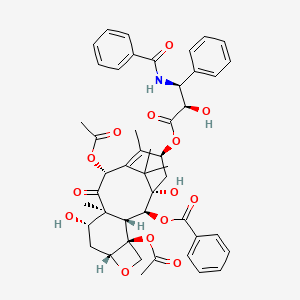|
Name: Paclitaxel
Type: Chemotherapeutic agent
AKA: Taxol, Pacific Yew

|
|
II. Natural Derivative

|

|
|
IV. History
Paclitaxel, a chemotherapeutic agent, was discovered in the 1960s and developed in the 1990s. It is used to treat various cancers by inhibiting cell division. Its introduction marked a significant advancement in cancer treatment and remains a key drug in oncology.

|
|
V. Legal Information
Paclitaxel is a chemotherapy drug used in cancer treatment. It is not classified as a controlled substance but is regulated to ensure proper use in medical settings. [Source: UNODC].
Key US Federal Policies:
Paclitaxel is regulated by the FDA as a chemotherapeutic agent. Its use is subject to strict guidelines to ensure safety and efficacy in cancer treatment.
|
|
VI. Physical Effects
Paclitaxel is a chemotherapy agent used for cancer treatment. It acts as an anti-cancer drug by disrupting cell division. Short-term use can effectively manage cancer, but long-term use may cause severe side effects such as neuropathy and cardiovascular issues. Overdose risks include severe toxicity and adverse reactions. Safe use involves careful dosing and monitoring. Recent research explores its efficacy in treating various cancers and managing side effects.  |
|
VII. Psychological Effects
Paclitaxel, a chemotherapeutic agent, can cause cognitive impairments and mood alterations. Immediate effects include mood disturbances and cognitive decline, lasting several hours to days. Long-term use can lead to psychological issues such as anxiety and depression. Research indicates significant mental health risks with chronic use, including severe mood disturbances and potential for cognitive impairments.
 |
|
VIII. Culture
Paclitaxel is a chemotherapy drug used in the treatment of various cancers. Its cultural significance is related to its role in cancer treatment and its impact on improving patient outcomes. Media coverage often focuses on its effectiveness in cancer therapy and the challenges of managing side effects. Paclitaxel is used medicinally and is part of broader discussions about cancer treatment, drug development, and patient care.
 |
